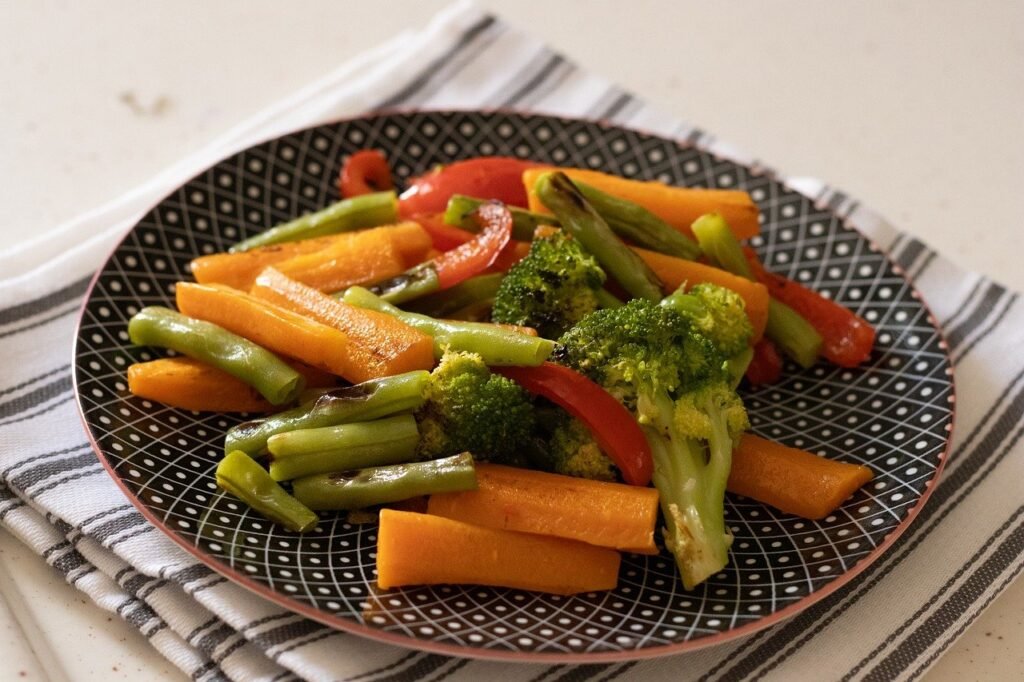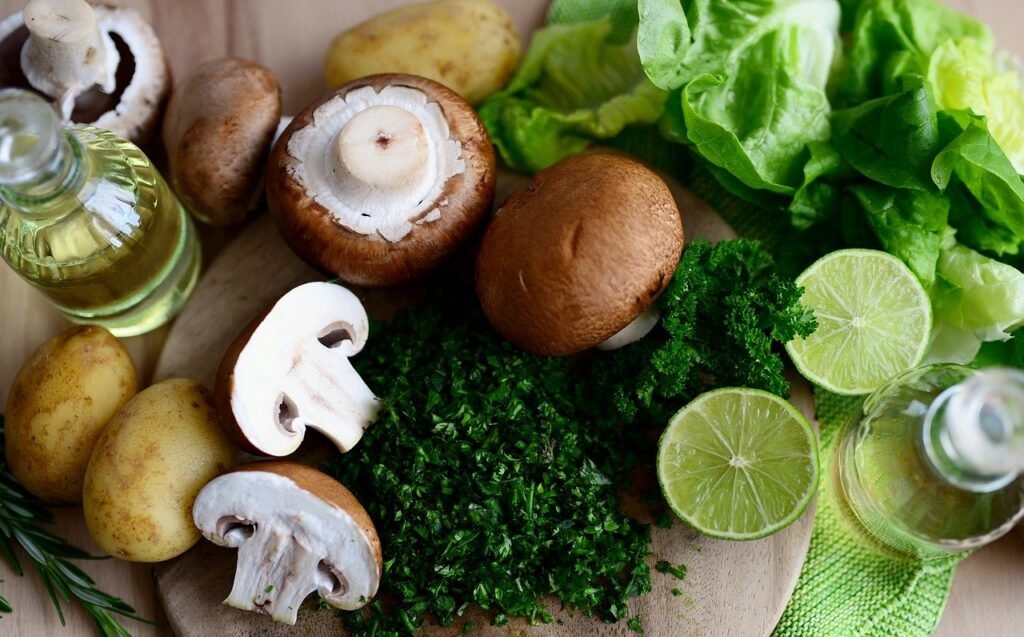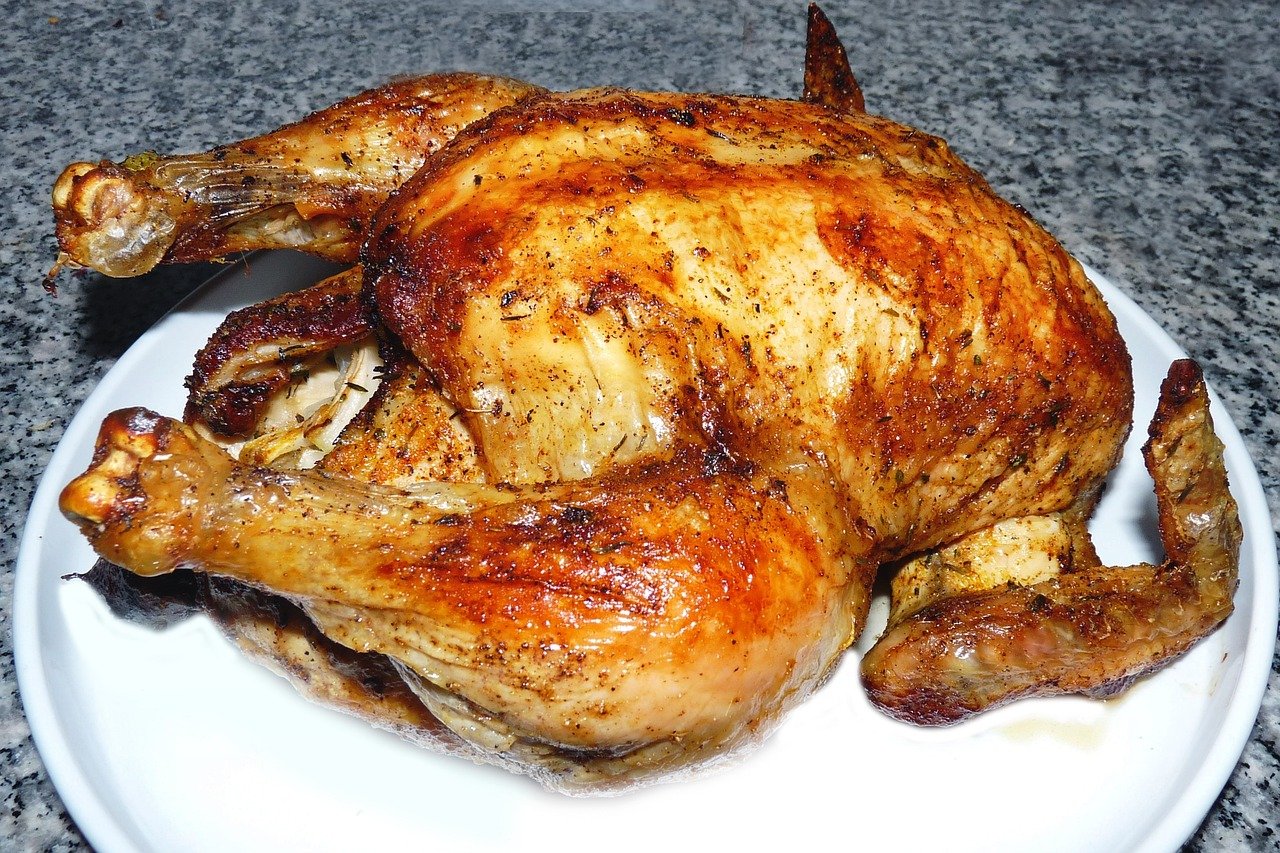Whole30 Meal Plan: 30 Days of Tasty, Healthy Recipes for Clean Eating

Introduction to Whole30: A Pathway to Clean Eating
The Whole30 program is more than just a diet; it’s a comprehensive approach to nutrition that emphasizes whole, unprocessed foods. By eliminating added sugars, grains, dairy, legumes, and certain additives, Whole30 aims to reset your body’s eating habits and eliminate inflammatory triggers. This program is not just about weight loss but also about understanding how different foods affect your body and overall health. The result is a transformative journey toward a healthier, more conscious lifestyle.
The Fundamentals of Whole30: What to Expect
Understanding the Whole30 Rules
The rules of Whole30 are straightforward but strict. For 30 days, participants must avoid:
- Alcohol – In all forms, even for cooking.
- Grains – This includes wheat, corn, rice, oats, and more.
- Legumes – Including beans, peas, chickpeas, lentils, soy, and their derivatives.
- Dairy – All forms of dairy, including milk, cheese, yogurt, and butter.
- Certain additives – Such as carrageenan, MSG, and sulfites.
Participants are encouraged to consume plenty of vegetables, fruits, lean proteins, and healthy fats. The goal is to fuel the body with nutrient-dense foods that support overall health.
Benefits of the Whole30 Program
The Whole30 program offers numerous benefits, including improved digestion, increased energy levels, and better sleep. By eliminating potentially inflammatory foods, many people experience reduced bloating, clearer skin, and mental clarity. Additionally, Whole30 can help identify food sensitivities, leading to more informed dietary choices in the long run.
Meal Planning: A 30-Day Journey
Week 1: Kickstarting Your Whole30 Journey
The first week of Whole30 can be challenging as your body adjusts to a new way of eating. To set yourself up for success, plan your meals Plan with variety and flavor in mind.
Breakfast: Sweet Potato Hash with Eggs and Avocado
This dish combines sweet potatoes, bell peppers, and onions, sautéed to perfection and topped with poached eggs and creamy avocado slices.
Lunch: Grilled Chicken Salad with Citrus Vinaigrette
A refreshing salad featuring grilled chicken breast, mixed greens, cherry tomatoes, cucumber, and a zesty citrus vinaigrette. This meal Plan is light yet satisfying, providing a balance of protein and healthy fats.
Dinner: Zucchini Noodles with Pesto and Shrimp
Swap traditional pasta for zucchini noodles, tossed in a homemade basil pesto sauce. Add sautéed shrimp for a protein-packed dinner that’s both delicious and nutritious.
Week 2: Navigating the Slump
By the second week, you may experience a slump as your body continues to detoxify from previous dietary habits. Staying committed to the plan is crucial.
Breakfast: Chia Seed Pudding with Fresh Berries
A delightful and easy-to-make breakfast option. Top with fresh berries and a sprinkle of nuts for added texture and flavor.
Lunch: Turkey and Avocado Lettuce Wraps
These wraps are a quick and portable option. Use large lettuce leaves to wrap slices of turkey breast, avocado, and tomato. Add a dollop of compliant mustard for an extra kick.
Dinner: Baked Salmon with Asparagus and Lemon
A simple yet elegant meal Plan. Season salmon fillets with herbs and bake alongside asparagus spears. Finish with a squeeze of fresh lemon juice for a burst of flavor.
Week 3: Embracing the Routine
As you enter the third week, the Whole30 lifestyle becomes more familiar and easier to maintain. This week focuses on incorporating more variety into your meal Plan.
Breakfast: Spinach and Mushroom Omelette
A classic breakfast option that’s easy to customize. Sauté spinach and mushrooms, then fold them into a fluffy omelet.
Lunch: Beef and Vegetable Stir-Fry
A quick and satisfying lunch. Use lean beef strips and a variety of colorful vegetables, such as bell peppers, broccoli, and snap peas. Stir-fry with coconut aminos for a Whole30-compliant soy sauce alternative.
Dinner: Stuffed Bell Peppers
Fill bell peppers with a mixture of ground turkey, cauliflower rice, and your favorite spices.

Week 4: The Final Stretch
The final week of Whole30 is about maintaining momentum and preparing for life post-program. This is the time to reflect on your journey and plan for a sustainable transition.
Breakfast: Banana and Almond Butter Smoothie
This breakfast is quick and perfect for busy mornings.
Lunch: Chicken and Vegetable Soup
A warm and nourishing soup made with shredded chicken, carrots, celery, and kale. This meal Plan is both comforting and nutrient-dense, ideal for a midday meal Plan.
Dinner: Cauliflower Fried Rice with Pineapple and Chicken
A creative take on a classic dish. Use riced cauliflower instead of traditional rice and mix it with chicken, pineapple, bell peppers, and green onions. Season with coconut aminos for a touch of sweetness and umami.
Post-Whole30: Reintroducing Foods and Continuing Your Journey
After completing the Whole30 program, it’s essential to reintroduce eliminated foods slowly and systematically. This process helps you understand how specific foods affect your body and allows you to make informed choices about your diet moving forward.
Start by reintroducing one food group at a time, observing any changes in your body’s response. Pay attention to digestion, energy levels, mood, and skin condition. This mindful approach ensures that you continue to enjoy the benefits of Whole30 while allowing for a more flexible diet.
Tips for a Successful Whole30 Experience
While the Whole30 program is straightforward, success depends on careful planning, preparation, and a positive mindset. Here are some additional tips to help you stay on track and make the most of your 30-day journey:
1. Meal Plan Prep and Planning
One of the keys to a successful Whole30 experience is consistent meal Plan preparation. Planning your meals ahead of time ensures you have compliant options readily available and reduces the temptation to deviate from the program. Set aside time each week to plan your meals, grocery shop, and prepare ingredients. Batch-cooking meals or preparing ingredients in advance can save time and make it easier to stick to the plan, especially on busy days.
2. Read Labels Carefully
Many packaged foods contain hidden sugars, preservatives, and other non-compliant ingredients. Always read labels carefully and familiarize yourself with the different names of added sugars and additives. When in doubt, opt for fresh, whole foods, which are naturally compliant with the Whole30 guidelines.
3. Find Support and Community
Participating in Whole30 with friends or family members can provide additional motivation and accountability. Online communities and social media groups dedicated to Whole30 can also be valuable resources for sharing recipes, tips, and encouragement. Engaging with others who are on the same journey can help you stay committed and inspired.
4. Manage Cravings and Emotional Eating
During the Whole30 program, you may experience cravings for certain foods, especially if you previously consumed a lot of sugar or processed foods. Drinking water, going for a walk, or distracting yourself with a different activity can help curb cravings. Additionally, Whole30 encourages mindful eating practices, helping you to distinguish between physical hunger and emotional eating triggers.

5. Keep a Food and Mood Journal
Keeping a journal during your Whole30 journey can be a powerful tool for tracking your progress and understanding the impact of different foods on your body and mood. Note what you eat, how you feel, and any changes you observe in your digestion, energy levels, and overall well-being. This practice can provide valuable insights during the reintroduction phase and beyond.
Exploring Whole30-Compliant Snacks and Beverages
While Whole30 emphasizes a balanced meal Plan per day, compliant snacks and beverages can help you stay satisfied and energized throughout the day. Here are some Whole30-friendly options:
Snacks:
- Almond Butter with Apple Slices: A delicious and satisfying combination of protein, healthy fats, and natural sugars.
- Hard-Boiled Eggs: A convenient source of protein that can be prepared in advance and enjoyed on the go.
- Raw Veggies with Guacamole: Crunchy vegetables like carrots, cucumber, and bell peppers paired with creamy guacamole make for a refreshing snack.
- Nuts and Seeds: A handful of unsalted almonds, walnuts, or sunflower seeds can provide a quick energy boost.
Beverages:
- Herbal Tea: Enjoy a warm cup of herbal tea without added sweeteners. Peppermint, chamomile, and ginger teas are great options.
- Sparkling Water with Lime: For a refreshing, bubbly drink, opt for plain sparkling water with a squeeze of fresh lime.
- Infused Water: Add slices of cucumber, berries, or citrus fruits to water for a naturally flavored and hydrating beverage.
Dealing with Challenges and Staying Motivated
Embarking on a Whole30 journey is not without its challenges. Social events, dining out, and travel can present difficulties when adhering to the program. However, with a little planning and creativity, you can navigate these situations successfully.
Dining Out Tips:
- Research Restaurants: Before dining out, research restaurants that offer Whole30-compliant options. Many establishments now cater to dietary preferences and can accommodate special requests.
- Ask Questions: Don’t hesitate to ask your server about ingredients and cooking methods. Request meals Plan to be prepared without butter, sauces, or marinades that may contain non-compliant ingredients.
- Opt for Simple Dishes: Grilled proteins, steamed vegetables, and salads with olive oil and vinegar are usually safe bets.
Travel Tips:
- Pack Snacks: When traveling, pack Whole30-compliant snacks like nuts, dried fruit (without added sugar), and jerky.
- Choose Accommodations with Kitchen Access: If possible, stay in accommodations with kitchen facilities, allowing you to prepare your own meals Plan.
- Plan Ahead: Research your destination and identify grocery stores or markets where you can purchase fresh, Whole30-friendly ingredients.
Celebrating Your Whole30 Success
Completing the Whole30 program is a significant achievement, deserving of celebration. Reflect on the positive changes you’ve experienced, whether it’s increased energy, better digestion, or a greater awareness of your eating habits. Remember that the end of the 30 days is not an end but a new beginning in your journey toward better health.
As you reintroduce foods and find a sustainable balance that works for you, continue to prioritize whole, nutrient-dense foods. The skills and knowledge gained during Whole30 will serve as a foundation for a healthier lifestyle, allowing you to make informed choices and maintain the benefits you’ve achieved.

Whole30 Recipes: Delicious Ideas for Every Meal Plan
To support your Whole30 journey, we’ve compiled a variety of recipes that cater to different tastes and preferences. These recipes are designed to be simple, nutritious, and compliant with Whole30 guidelines.
Breakfast Ideas
- Sweet Potato and Spinach FrittataIngredients:
- 1 large sweet potato, peeled and diced
- 1 cup fresh spinach
- 6 large eggs
- 1/2 cup diced onions
- 1/4 cup coconut milk
- Salt and pepper to taste
- 1 tablespoon olive oil
- Preheat your oven to 375°F (190°C).
- Add diced sweet potatoes and onions, cooking until tender.
- Add spinach and cook until wilted.
- Pour the egg mixture over the sweet potato mixture in the skillet.
- Berry and Coconut Chia PuddingIngredients:
- 1/2 cup chia seeds
- 1 cup coconut milk
- 1 tablespoon vanilla extract
- 1 tablespoon maple syrup (optional)
- 1/2 cup mixed berries (strawberries, blueberries, raspberries)
- In a bowl, combine chia seeds, coconut milk, vanilla extract, and maple syrup.
- Before serving, top with fresh berries.
Lunch Ideas
- Crispy Baked Chicken TendersIngredients:
- 1 pound chicken tenders
- 1 cup almond flour
- 1 teaspoon paprika
- 1 teaspoon garlic powder
- 1/2 teaspoon salt
- 1/2 teaspoon black pepper
- 2 large eggs, beaten
- In a bowl, mix almond flour, paprika, garlic powder, salt, and pepper.
- Dip each chicken tender in the beaten eggs, then coat with the almond flour mixture.
- Bake for 15-20 minutes, or until the chicken is cooked through and crispy.
- Roasted Vegetable and Quinoa salad ingredients:
- 1 cup quinoa2 cups water2 cups mixed vegetables (bell peppers, zucchini, cherry tomatoes)2 tablespoons olive oil1 tablespoon balsamic vinegarSalt and pepper to tasteFresh basil for garnish
- Cook quinoa according to package instructions and let cool.
- Preheat your oven to 425°F (220°C).
- Toss mixed vegetables with olive oil, salt, and pepper, and roast for 20-25 minutes.
- Combine cooked quinoa, roasted vegetables, and balsamic vinegar in a large bowl.
- Garnish with fresh basil before serving.
Dinner Ideas
- Lemon Herb Grilled SalmonIngredients:
- 4 salmon fillets
- 2 tablespoons olive oil
- 2 tablespoons lemon juice
- 2 cloves garlic, minced
- 1 teaspoon dried oregano
- Salt and pepper to taste
- Marinate salmon fillets in the mixture for at least 30 minutes.
- Preheat your grill to medium-high heat and grill salmon for 4-5 minutes per side, or until cooked through.
- Stuffed Acorn SquashIngredients:
- 2 acorn squashes, halved and seeded
- 1 pound ground turkey
- 1/2 cup diced onions
- 1/2 cup diced celery
- 1/2 cup diced apple
- 1/4 cup chopped walnuts
- 1 teaspoon dried sage
- Salt and pepper to taste
- Preheat your oven to 375°F (190°C).
- Place acorn squash halves cut side up on a baking sheet.
- Bake for 30 minutes, or until tender.
- In a skillet, cook ground turkey, onions, celery, and apple until the turkey is browned.
- Stir in walnuts, sage, salt, and pepper.
- Fill the roasted squash halves with the turkey mixture and return to the oven for an additional 10 minutes.

Transitioning from Whole30: What to Consider
As you transition out of the Whole30 program, it’s important to approach reintroducing foods with caution. Reintroducing foods one at a time helps to isolate potential sensitivities and understand how each food affects your body.
- Follow a Structured Reintroduction Plan: Begin by reintroducing one food group at a time and observe how it impacts your energy, mood, and digestion. Commonly reintroduced foods include legumes, dairy, and grains.
- Monitor Your Body’s Reactions: Pay close attention to any changes in your body and health. Keep a journal to track your observations, which can help you make informed decisions about what foods to include or exclude in your long-term diet.
- Maintain Whole30 Principles: Even after the program ends, continue incorporating many of the Whole30 principles into your diet. Focus on whole, nutrient-dense foods, limit processed items, and choose healthy fats and lean proteins.
Conclusion: Making Whole30 a Part of Your Lifestyle
The Whole30 program offers valuable insights into healthy eating and can serve as a foundation for a balanced, nutritious lifestyle. By embracing whole foods and mindful eating, you can foster long-term health and well-being. Whether you continue with a Whole30-like approach or adapt its principles to fit your needs, the knowledge gained during the program will support your journey toward a healthier and more vibrant life.
Remember, the key to sustaining the benefits of Whole30 is to remain committed to making informed and conscious food choices. Celebrate your achievements, learn from your experiences, and continue to prioritize your health and wellness.
Whole30 Meal Plan: FAQs
1. What is the Whole30 program?
The Whole30 program is a 30-day nutritional reset designed to help individuals identify food sensitivities and promote overall health. It emphasizes the consumption of whole, unprocessed foods while eliminating added sugars, grains, dairy, legumes, and certain additives. The goal is to reset eating habits and improve health by focusing on nutrient-dense foods.
2. Can I drink coffee on Whole30?
Black coffee is allowed on Whole30. However, any additives such as cream, sugar, or flavored syrups are not compliant with the program. If you prefer a creamy coffee, consider using compliant alternatives such as almond milk or coconut milk.
3. Are there any specific foods I should avoid during Whole30?
Yes, Whole30 restricts several categories of foods:
- Added sugars and artificial sweeteners.
- Grains include wheat, rice, oats, and corn.
- Legumes such as beans, lentils, chickpeas, and soy products.
- Certain additives like carrageenan, MSG, and sulfites.
4. What are some Whole30-friendly snacks?
Whole30-friendly snacks include:
- Fresh fruits and vegetables: Apple slices with almond butter or carrot sticks with guacamole.
- Hard-boiled eggs: A convenient protein source.
- Homemade jerky: Ensure it’s free from added sugars and preservatives.
5. Can I eat out while on Whole30?
Yes, you can eat out while following Whole30, but it requires careful planning. Look for restaurants that offer simple, unprocessed options. Always ask about ingredients and cooking methods to ensure your meal Plan aligns with Whole30 guidelines.

6. How should I handle cravings during Whole30?
Cravings are common during the first few days of Whole30. To manage them, try:
- Drinking water or herbal tea.
- Eating compliant snacks to keep hunger at bay.
- Engaging in other activities to distract yourself, such as going for a walk or reading.
7. What are some common side effects when starting Whole30?
When starting Whole30, some people experience side effects as their body adjusts to the dietary changes. Common side effects may include:
- Headaches: Often due to the reduction in sugar and caffeine.
- Digestive changes: Including bloating or changes in bowel movements.
These symptoms usually subside after a few days as your body adapts to the new eating pattern.
8. What is the best way to reintroduce foods after completing Whole30?
Reintroducing foods should be done gradually and systematically:
- Eat the reintroduced food for a day and monitor your body’s reaction.
- Observe any changes in digestion, energy levels, mood, or skin condition.
- Wait a few days before introducing another food group to accurately gauge its impact.
9. Can I exercise while on Whole30?
Yes, you can and should continue to exercise while on Whole30. The program does not restrict physical activity. In fact, maintaining regular exercise can help support overall health and improve your results. Just be sure to fuel your workouts with compliant, nutrient-dense foods.
10. How do I stay motivated throughout the Whole30 program?
Staying motivated during Whole30 can be supported by:
- Setting clear goals and understanding the benefits of the program.
- Planning meals Plan and snacks to avoid last-minute temptations.
- Joining a support group or community for encouragement and accountability.
- Tracking your progress and celebrating milestones to stay focused on your health goals.




